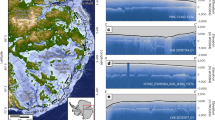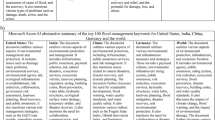Abstract
THE communication of Lord Kennet of the Dene1 reminds me of a note I wrote recently in an account of the ice storm of the end of January and of the thaw that occurred a week later. On the evening of February 3 rain began and by the morning of February 4 there was a strong thaw. But the ice below the snow and the frozen ground did not let the water soak away, with the result that there was much flooding. In the Cotswolds water poured over the frozen slopes, and at Bagendon the valley became a raging torrent four to five feet deep. Even here, 700 ft. above the sea, there was much flooding and for a time some roads were impassable. It has occurred to me more than once when watching the run off of water in a thaw after the ground has been frozen that such scenes must have occurred in the south of England on a much larger scale every spring during the Ice Age, and I have wondered whether this may not have contributed, or may not have been the chief cause, in the formation of the dry valleys of the chalk country.
This is a preview of subscription content, access via your institution
Access options
Subscribe to this journal
Receive 51 print issues and online access
$199.00 per year
only $3.90 per issue
Buy this article
- Purchase on SpringerLink
- Instant access to full article PDF
Prices may be subject to local taxes which are calculated during checkout
Similar content being viewed by others
References
NATURE, 145, 466 (March 23, 1940).
Author information
Authors and Affiliations
Rights and permissions
About this article
Cite this article
CAVE, C. Chalk Landscape. Nature 145, 629 (1940). https://doi.org/10.1038/145629b0
Issue date:
DOI: https://doi.org/10.1038/145629b0



